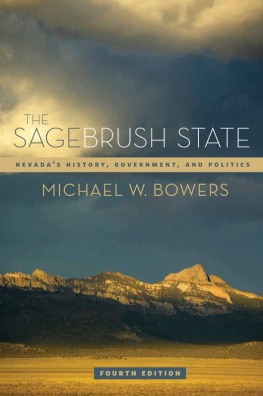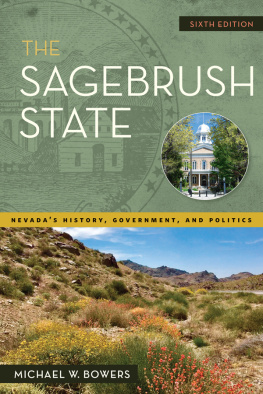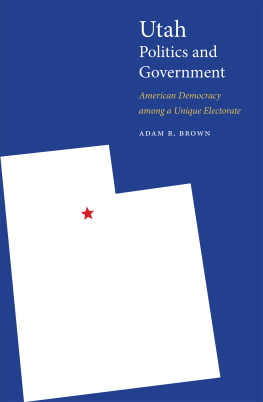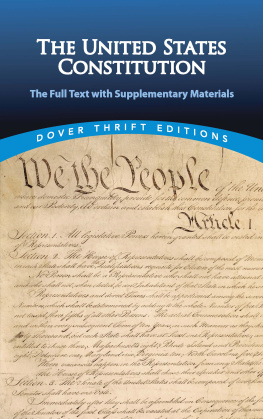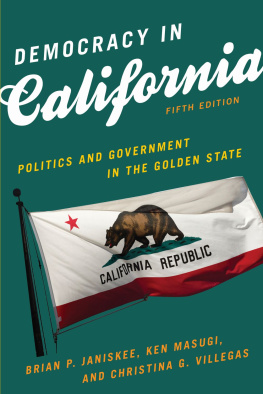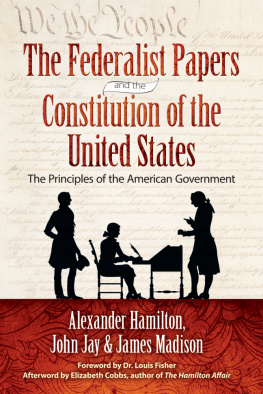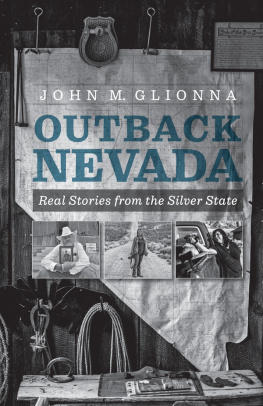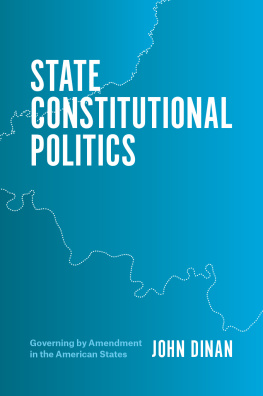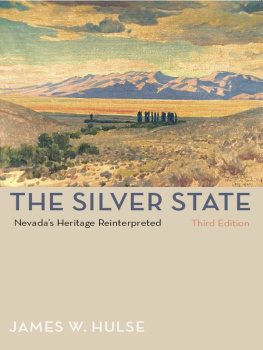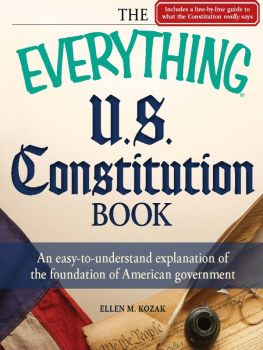Wilbur S. Shepperson Series in Nevada History
Series Editor: Michael S. Green University of Nevada Press,
Reno, Nevada 89557 USA
Copyright 2013 by University of Nevada Press
All rights reserved Manufactured in the United States of America
Library of Congress Cataloging-in-Publication Data
Bowers, Michael Wayne.
The Sagebrush State : Nevadas history, government, and politics / Michael W. Bowers. Fourth edition.
pages cm. (Wilbur S. Shepperson series in Nevada history)
Includes bibliographical references and index.
ISBN 978-0-87417-923-1 (pbk.)
ISBN 978-0-87417-924-8 (e-book)
1. NevadaHistory. 2. NevadaPolitics and government. I. Title.
F841.B593 2013
979.3dc23 2013022540
Preface to the Fourth Edition
Since the publication of the third edition of The Sagebrush State in 2006, the state of Nevada has undergone incredible and in some cases debilitating changes politically and economically. At the same time, many good changes have occurred as well. In addition to the elections that have taken place since the third edition and the new officeholders who have taken their seatsincluding two governorsthere have been several regular and special sessions of the legislature.
In the preface to the third edition, I noted that the Democrats appear to be quickly losing ground in the Sagebrush State, given electoral successes by the Republicans in the 1990s and early 2000s. As I write this in early 2013, it is the case that the Republicans seem to be on the ropes, with Tea Party, libertarian, and more traditional factions battling for the soul of the party. Harry Reid has organized and guided the Democrats and shepherded not only his own reelection but also the election wins in Nevada for President Barack Obamatwiceand wins for other Democrats down the ticket. In addition, the Republicans who in 2006 held all six constitutional offices were by 2013 down to only two. The state senate remains closely divided, as it has for several years (with Democrats holding a one-seat majority), but the state assembly appears to be permanently in Democratic hands.
As most observers know, the state of Nevada was among the hardest hit by the Great Recession of 20072011. Unemployment rates and home foreclosures were the highest of any state. When the housing bubble burst, the bottom fell out of the construction industry, and many of these workers left the state to find work elsewhere. With national unemployment high and job security nonexistent in virtually every sector of the economy, tourists either did not have dollars to spend in Nevada or were too cautious to do so. As a result, the economy in the Sagebrush State tanked. Politically, the bad economy led to multiple special sessions of the legislature to balance the budget, conflict over raising taxes and cutting spending, and difficult relations between Governor Jim Gibbons and the legislature. In 2010 Gibbons became the first governor in Nevada to be denied renomination by his party.
On a positive note, the legislature passed a domestic-partner bill in 2009, allowing gay, lesbian, and straight couples to register as domestic partners with the state, entitling them to all the same rights as married couples (with the exception of employer-provided health insurance). And in 2011, the legislature passed three bills protecting the rights of transgender individuals. Constitutionally, in 2012 the voters amended the state constitution, allowing the legislature to call itself into special session, a power it had never had before.
In addition to the economic meltdown in the state, perhaps the biggest change since the third edition has been the newly found political power of the Sagebrush States Hispanic population. As that population continues to grow, register to vote, and participate in various ways in numbers unseen before, Hispanics are becoming an important political force and one that officeholders cannot ignore.
I am very pleased to provide this updated version of a book that first came out in 1996. I hope the reader will find it to be educational and, if not entertaining, well, then, at least not boring. I am, as always, tremendously grateful to Brian Davie of the Legislative Counsel Bureau for his assistance in tracking down even the most elusive and obscure information. This book is certainly the better for his efforts.
And, of course, I must once again thank all of the great folks at the University of Nevada Press for their helpfulness, cheerfulness, and assistance in creating all four editions of this work.
Preface
When I first began discussing this book with Nicholas Cady and Thomas R. Radko of the University of Nevada Press some years ago, I had in mind a relatively short work that would provide readers with an overview of Nevada history and government. I thought then, as I do now, that many Nevadans and non-Nevadans would be interested in a concise work that would allow them to understand Nevadas intriguing past and its effects on the present and future direction of the state. A work of that type could be utilized as a supplementary text in the states universities and community colleges and would, perhaps, also find a niche among high school students and members of the general public.
These thoughts and discussions brought about The Sagebrush State. Throughout the writing of this book I have attempted to be true to my original intent to provide a concise work that could be revised on a regular basis to reflect changes in the state and its politics. Certainly this work does not pretend, nor was it ever intended, to be a comprehensive volume on every detail of Nevada history and politics; for that degree of thoroughness, the reader is directed to the bibliography. A great debt is owed by this author and all others in the field to those pioneering historians and political scientists who have taught us what we now know about the state: Hubert Howe Bancroft, Eleanore Bushnell, Don Driggs, Russell Elliott, James Hulse, Effie Mona Mack, William Rowley, Elmer Rusco, and many others too numerous to mention.
In addition, I would like to specifically thank Eugene Moehring of the History Department at the University of Nevada, Las Vegas, and Michael Green of the Community College of Southern Nevada for their assistance and counsel during the research and writing process. Were it not for their insights, this book would be the poorer. Brian Davie of the Legislative Counsel Bureau and Sidney Watson of the Government Documents Division of the James L. Dickinson Library at UNLV provided regular assistance in my quest for obscure facts and figures. I would also like to thank Leonard E. Pat Goodall for providing me with a draft of his forthcoming omnibus book with Don W. Driggs, Nevada Politics and Government: Conservatism in an Open Society. I am grateful to Trudy McMurrin of the University of Nevada Press for her unflagging devotion to seeing this work in print and her regular phone calls to ask, So, hows the book coming?
I would also like to thank Dean Guy Bailey of the College of Liberal Arts and the staff of the Deans office (Joyce Nietling, Leslie Marsh, Judy Ahlstrom, Jeremy Wirtjes, and Mike Comstock) for all they have done to ease my burdens as an administrator. Without them, I would be unable to pursue the joys of research, writing, and teaching.
Any errors to be found within these pages must, of course, remain mine alone.

